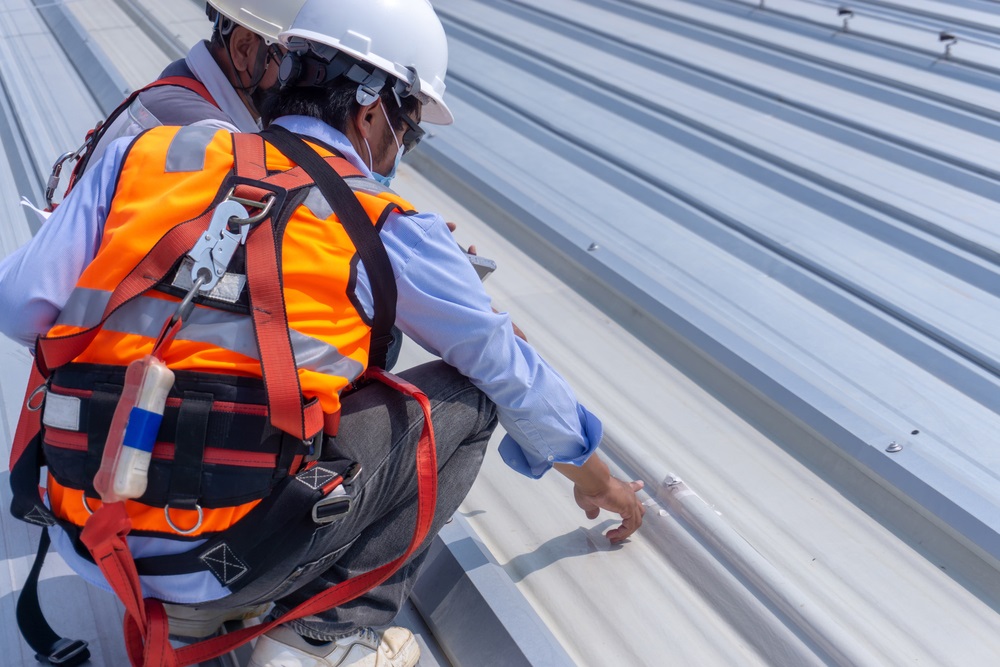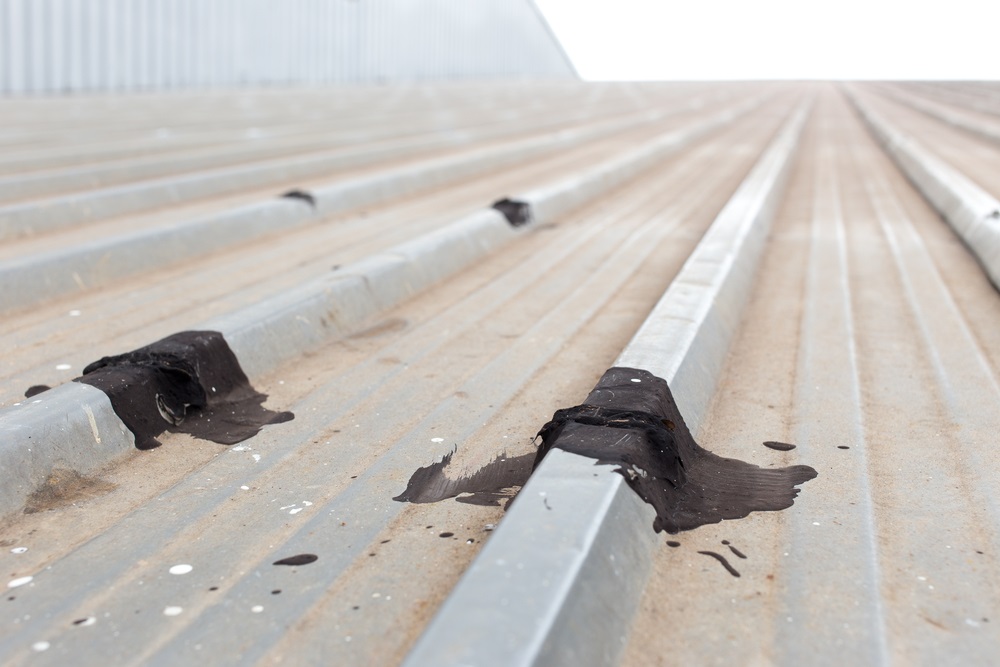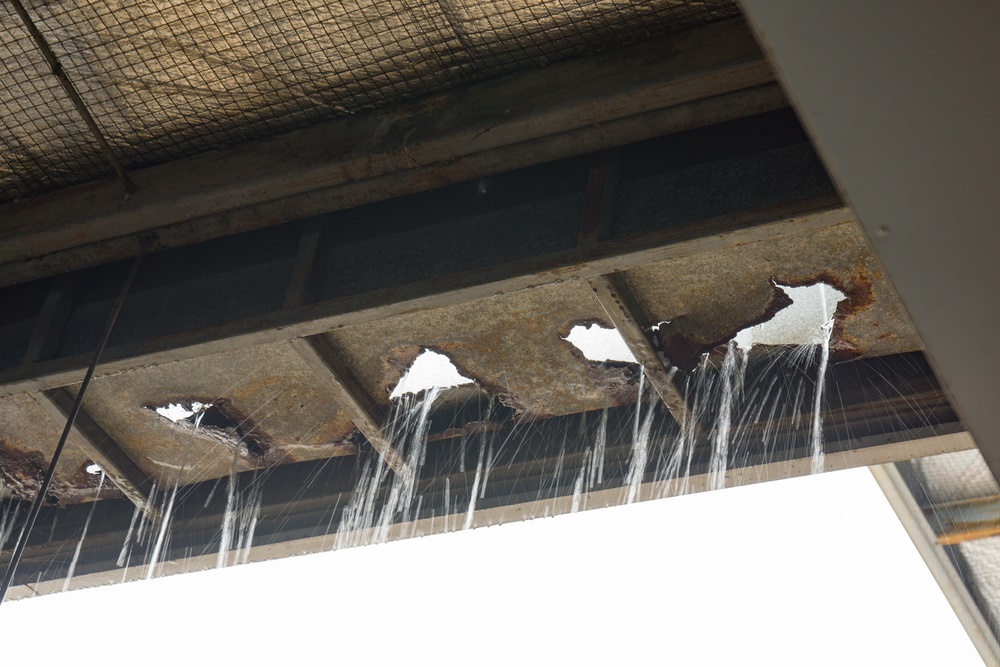Leaks on a metal roof can be a homeowner’s nightmare, especially when it comes to metal roofing. While metal roofing is known for its durability, it can still encounter issues that lead to leaks. Identifying the causes of these leaks is crucial for effective metal roof repair.
In this comprehensive guide, we will explore the eight major causes of leaks on metal roofs and provide you with effective repair solutions. Don’t let a leaking metal roof dampen your spirits – let’s dive into the details!
8 Major Causes of Metal Roof Leaks || A Comprehensive Guide
Metal roofs can leak. Understanding the major causes of leaks on metal roofs is crucial. By identifying these major causes of leaks on metal roofs, homeowners and building owners can take proactive measures to address any potential issues promptly.
1. Fastener Issues | Metal Roofing Screws
Fasteners, such as metal roofing screws, play a critical role in securing metal roofing panels to the underlying structure. Several issues related to fasteners can lead to leaks:
- Overdriven screws: When screws are driven too deeply into the metal roofing panel, they can penetrate the surface, compromising its integrity and creating a pathway for water infiltration.
- Underdriven screws: If screws are not driven inadequately, the roof panels may not be tightly secured, allowing water to seep through gaps.
- Screws driven at the wrong angle: Incorrectly angled screws can fail to create a tight seal, leaving gaps for water to penetrate.
- Screws that have missed the metal strut or wood framing below: Misaligned or improperly installed screws can miss the intended target, resulting in loose or insecure roofing panel and trims that may allow water entry.
2. Faulty Stack Flashings
Stack flashings are used to seal penetrations in the roof caused by vents, pipes, or other protrusions. If stack flashings are not properly installed or become damaged, leaks on metal roofs can occur. Common issues include cracks, gaps, or improper sealing around the penetration, allowing water to infiltrate the roof system.
3. Damaged or Missing Sealants
Metal roof sealants are vital for creating a watertight barrier between metal roof components. Several areas require sealants for optimal protection against leaks on a metal roof:
- Metal Ridge Caps: Ridge caps, which cover the ridge line where two roof slopes meet, should be sealed properly to prevent water from seeping under the caps and into the roof system.
- Z-Flashings: Z-flashings are used to seal the junction between the roof and vertical walls or chimneys. Damaged or missing metal roof sealants in this area can allow water to enter.
- Roof Transitions: Transitions between different roof sections or materials should be adequately sealed to prevent water infiltration at these vulnerable points.
- Counter Flashings: Counter flashings are installed over the top edge of vertical wall flashings to provide additional protection. Damaged or poorly sealed counter flashings can lead to leaks.
- Reglets: Reglets are grooves or channels cut into walls to receive flashing elements. Insufficient or damaged metal roof sealants in reglets can cause water penetration.
Pitch Pans: Pitch pans are used to seal irregular roof penetrations, such as pipes or conduits. Cracked or deteriorated metal roof sealants in pitch pans can result in leaks.
4. Faulty Curb Flashings
Curb flashings are employed to seal roof penetrations around equipment curbs or skylights. If curb flashings are not properly installed or maintained, water can infiltrate the roof system. Issues such as inadequate sealing, cracks, or gaps around the curb flashings can contribute to leaks.
5. Seams & Overlaps
Metal roof panels typically have seams and overlaps where adjacent roofing panel and trims join together. If these seams are not correctly sealed or if the overlaps become damaged, water can penetrate the metal roofing system. Improperly sealed seams, gaps, or loose connections between metal roofing panel are common culprits for leaks.
6. Rust & Corrosion
Rust and corrosion can damage metal roofing, leading to weakened structural integrity and the formation of holes or cracks through which water can penetrate. Corrosion occurs due to exposure to moisture, saltwater, acidic rain, or chemicals, causing pitting, cracking, or flaking of the metal surface.
Damaged coatings or surfaces compromise the roof’s ability to resist water, increasing the likelihood of leaks on metal roofs over time. Regular inspections, roof maintenance, protective coatings, proper drainage, and addressing rust or corrosion promptly are vital for preventing leaks and ensuring the longevity of metal roofing.
7. Aging & Mechanical Wear Tear
As metal roofing ages, it can experience wear and tear, potentially leading to leaks. Several factors contribute to this deterioration:
- Thermal expansion and contraction: Metal roofing expand and contract with temperature fluctuations, which can cause stress and strain on the roof components over time.
- Harsh weather conditions: Exposure to severe weather, such as high winds or heavy rains, can gradually degrade metal roof materials and joints.
- UV radiation: Continuous exposure to UV rays can lead to the breakdown of protective coatings, weakening the roof’s overall integrity.
- General wear and tear: Normal aging and usage can cause metal roofing to experience degradation, including loosening of fasteners, sealant deterioration, or metal roofing panel deformation.
8. Poor Roof Maintenance & Debris Build-up
Regular roof maintenance is crucial for the longevity and performance of metal roofing. Metal roofs can leak when routine inspections, cleaning, and maintenance are neglected. Common issues associated with poor roof maintenance include:
- Debris Build-up: Accumulated leaves, branches, and other materials can create water dams and block drainage systems,
- Clogged Gutters: Accumulated debris, such as leaves or twigs, can block gutters and prevent proper water drainage, leading to water pooling on the roof and potential leaks.
- Damaged Protective Coatings: Lack of roof maintenance can result in deteriorated protective coatings, making the metal roof more susceptible to rust, corrosion, and water infiltration.
Temporary Fixes To Stop The Leak
While waiting for professional repairs, temporary fixes can help stop metal roofing leaks and minimize damage. Here are some temporary solutions:
- Using Polyethylene Plastic Sheets: Secure plastic sheets over the affected area to provide temporary protection from rainwater.
- Waterproof Tarps: Cover the leaking area with a waterproof tarp to prevent water from entering the structure.
- Tar Papers: Apply tar paper over the leak as a temporary barrier against water.
- Applying Spray Form: Use spray foam to seal small gaps temporarily.
Permanent Solutions To Fix A Leaky Metal Roof

For long-term solutions to leaks on metal roofs, permanent repairs are necessary. For permanent solutions, here are some effective options:
1. Roof Sealant | Use High-Grade Epoxy Resin
Apply a high-grade epoxy resin roof sealant to seal gaps and prevent water infiltration. Applying a high-quality roof sealant can provide a durable and watertight barrier, preventing further leaks.
2. Install An Extra Layer Of Metal Sheeting
Adding an extra layer of metal sheeting over the existing roof can strengthen the structure and provide an additional protective layer against leaks on a metal roof. The extra layer of metal sheeting also reinforces the roof’s waterproofing and extends its lifespan.
3. Install New Flashing
Properly install new flashing to ensure a watertight seal around penetrations and roof edges. Replacing damaged or inadequate flashings with new ones can effectively seal vulnerable areas and prevent water infiltration.
4. Remove/Replace All Screws & Fasteners
If fasteners are the primary cause of leaks, replacing all screws and fasteners with appropriate ones can eliminate the issue. If fastener issues persist, then replacing all screws and fasteners may be required to achieve a secure connection and prevent future leaks.
5. Remove/Replace Entire Metal Roof
In some cases, replacing the entire metal roofing may be the best course of action, particularly if the roof is over a decade old or has significant damage. If the metal roofing is extensively damaged or past its lifespan, replacing the entire roof may be the most effective solution to prevent future leaks. Signs of extensive rust, loose panels, and widespread leaking indicate a deteriorated roof that may require complete replacement.
6. Roof Coating/Roof Restoration
Installing a roof coating system over the existing metal roof can provide an additional protective layer, and a renewed waterproofing barrier and enhance the roof’s performance. This solution is cost-effective and can extend the lifespan of the roof.
7. SPF Over The Existing Metal Roof | Spray Foam Roofing
Spray foam roofing involves using a layer of foam insulation and waterproofing over the existing metal roof. Applying spray foam roofing over the existing metal roof can create a seamless, insulating barrier that protects against leaks on metal roofs and reduces energy costs. It provides excellent insulation and eliminates leaks by sealing the entire roof surface.
Dangers of Neglecting a Metal Roof Leak

Ignoring leaks on a metal roof can have severe consequences. Leaks can lead to water damage, mould growth, compromised structural integrity, and even pose safety hazards.
Addressing leaks on metal roofs promptly not only prevents further damage but also improves the roof’s overall performance, ensuring longevity and saving money in the long run.
1. Structural Damage ─ The Undermining Threat
A metal roof leak gradually weakens the building’s structure, penetrating hidden areas and compromising support beams. Moisture erosion can undermine the foundation, endangering occupants and causing irreparable harm.
2. Mould and Mildew ─ The Silent Saboteurs
Untreated leaks on a metal roof create a breeding ground for mould and mildew. These invaders thrive in damp environments, pose health risks, and silently damage the building’s interior, affecting occupants’ well-being.
3. Electrical Hazards ─ Sparks Amidst the Drips
Water infiltrating through a metal roof leak can cause short circuits, electrical shocks, and fires. The corrosive nature of water weakens electrical components, compromising safety measures and creating a hazardous environment.
4. Energy Efficiency ─ Draining the Resources
Neglected leaks on a metal roof undermine energy efficiency by infiltrating insulation and disrupting the thermal barrier. Heat transfer increases energy consumption, straining heating and cooling systems and leading to higher utility bills.
5. Increasing Repair Costs ─ High Price of Delay
Ignoring a metal roof leak results in escalating repair costs. Unaddressed leaks cause widespread damage, including structural issues, mould infestation, electrical hazards, and diminished energy efficiency, leading to hefty remediation expenses.
DIY vs. Professional Metal Roof Leak Repair
While some temporary fixes can be done by homeowners, repairing a leaking metal roof is a complex task that often requires professional expertise. While temporary fixes can offer temporary relief, professional roofing services are recommended for lasting repairs.
Hiring a reliable roofing contractor ensures that the underlying causes of the leaks are identified and properly addressed. Professional roofers possess the expertise, tools, and materials necessary to identify and address the underlying causes of leaks on metal roofs effectively.
Average Metal Roof Repairs Cost in Australia
The average metal roof repair costs in Australia can vary depending on several factors such as the extent of the damage, the size of the roof, the type of metal used, the labour involved, and the location within Australia. Additionally, the cost may also vary based on the contractor you choose and their pricing structure.
On average, metal roof repairs can range from $500 to $5,000, but the cost can be higher for more extensive repairs. Keep in mind that these figures are approximate and can vary significantly.
Get Metal Roof Evaluation Today
Don’t let a leaking metal roof become a major problem. Get your free metal roof evaluation today! Stop leaks, improve performance, and save money by taking proactive steps to repair your metal roof.
Contact a reliable metal roofing contractor to ensure fool-proof repairs and roof maintenance to protect your investment in your home or building. Act now and enjoy leak-free, durable metal roofing for years to come.
FAQs
Can A Metal Roof Leak Stop On Its Own?
Roof leaks must be repaired immediately to prevent more damage. They do not repair themselves. As a result, it’s crucial to get your metal roof examined immediately if you see any leaks.
Is It Better To Repair Or Replace A Metal Roof?
If your metal roof is damaged, it’s vital to determine the extent of the damage right once. Limited damages may usually be rectified, but more significant damages may necessitate a complete roof replacement. There are serious effects to ignoring either situation, so act without delay.
How Much Does It Cost To Repair A Leak In A Metal Roof?
It can be expensive to fix a leak in a metal roof. Patching expenses can range from $625 to $2,980 depending on the size and extent of the damage as well as the supplies required to complete the project. So investigate it and urgently fix your metal roof!
What Is The Biggest Problem With Metal Roofing?
The fundamental drawback of metal roofing is that if the installation or maintenance is done incorrectly and water collects serious effects may result in water damage. Therefore, it’s crucial to take action instantly if you discover a metal roof leak.
How Often Should I Have My Metal Roof Inspected For Leaks?
It is advised that you check your metal roof for leaks at least twice a year so that you can identify any possible problems and address them before they get worse. Additionally, it is advisable to take preventative steps and respond instantly in the event of a roof leak.
Is It Normal For A Metal Roof To Leak In Heavy Rain?
During periods of severe rain, metal roof panels may become loose and start to leak. Therefore, it is essential to repair this issue before the next rainstorm to prevent any harm.
How Long Does A Metal Roof Typically Last Before It Starts To Leak?
Depending on the type of metal used, a metal roof can last anywhere between 40 and 70 years. To maintain its long-term durability, make sure any leaks are quickly fixed.
How do you fix a leaking metal roof?
4 repair options for a leaking metal roof
- Reinstall all fasteners and screws.
- Discard the entire metal roof and replace it.
- To protect the metal roof already in place, apply a roof coating procedure.
- Apply spray foam on top of the current metal roof.
Which material is used to stop water leakage?
Caulking is used to seal leaks and apply waterproofing. When caulking, ready-mixed ingredients like silicone, polyurethane, polysulfide, or polyurethane plus acrylic sealant are used to create a seal.
How do you waterproof a leak?
Concrete leaks can be stopped with polyurethane foams. The foam must be able to fill the crack if it is large enough. When polyurethane foam comes into contact with water, it hardens and fills the crack. These foams provide watertight defence against additional leakage issues.
What sealant is used for a roof?
There are five types of metal roof sealants: acrylic, polyurethane, silicone, rubber, and sealant tape.

